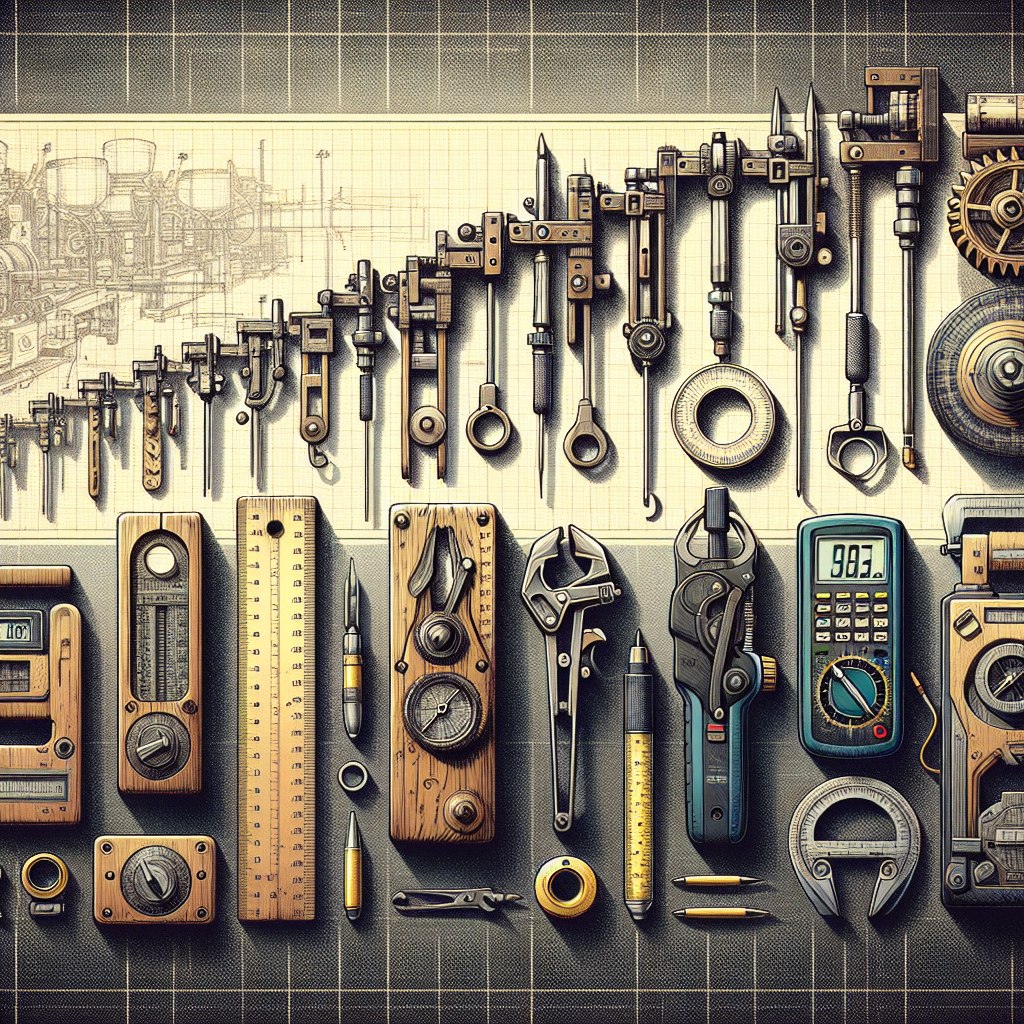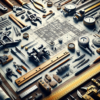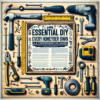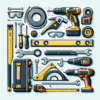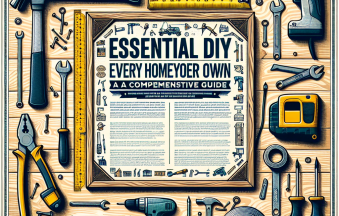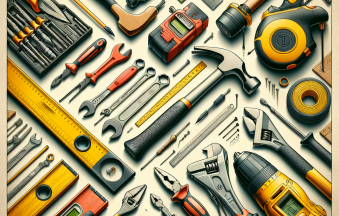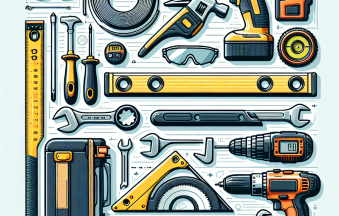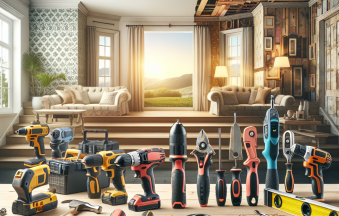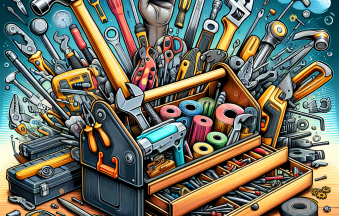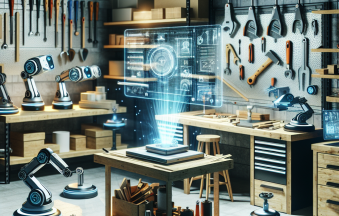Embarking on a DIY endeavor can be both a fulfilling and intimidating journey. With the appropriate tools at your command, you can elevate any area of your abode into a work of art. In this manual, we will delve into the crucial DIY tools segmented into various categories, allowing you to approach your next task with assurance. Whether you are updating a space, repairing a dripping faucet, or setting up new illumination, possessing the correct instruments will significantly impact your results.
Home Tools
Home tools form the foundation of any DIY endeavor. They consist of items that assist you in executing various activities efficiently. Fundamental equipment like a corded or cordless drill, a robust workbench, and an extendable ladder serve as an excellent starting point. A drill is especially multifunctional, allowing you to perform tasks ranging from creating holes to fastening screws.
Another vital element of home tools is a multi-tool. With multiple attachments, it can manage cutting, sanding, and scraping, making it ideal for an array of tasks around the home. A reliable set of safety equipment—gloves, goggles, and a mask—should equally be prioritized. Safety must always be your utmost concern when embarking on DIY projects.
Construction Materials
When it involves constructing anything from a bookshelf to a patio, possessing high-quality construction materials is essential. Lumber, plywood, and drywall are the primary resources you’ll frequently require. Always opt for superior wood to ensure sturdiness and longevity.
Alongside wood, consider investing in materials such as insulation and sheathing if you’re undertaking larger projects. A trip to your local hardware store can also reveal a multitude of smaller supplies like nails, screws, adhesives, and caulking that are vital for any building task. Ensure you stock a variety of sizes; having the correct fasteners readily available can prevent an unnecessary trip back to the store.
Electrical Work
Grasping basic electrical tasks can equip you to manage common activities like replacing light fixtures or adding new outlets. Key electrical tools include wire strippers, a voltage tester, and a circuit tester. These instruments will aid you in safely and effectively executing electrical assignments.
Having a high-quality toolbox is also advantageous for organizing your materials when working with electrical components. Be sure to familiarize yourself with local codes and regulations when dealing with electrical work to guarantee both safety and compliance.
Fixtures & Fasteners
Fixtures encompass all the small elements that bring your projects to fruition, such as hinges, latches, and handles. Arranging these components in your workspace can save precious time while you’re in the midst of a project. Fasteners such as nails, screws, and anchors are equally important; they keep everything intact.
Think about establishing a fastener organization system—like a small bin with labeled compartments—to maintain various types within easy reach. Understanding the correct size and type for each task can streamline your work and reduce frustration.
Kitchen & Bathroom
Revamping your kitchen or bathroom can significantly boost your home’s appeal. Essential tools for these areas include a high-quality plumber’s wrench for any plumbing work and an adjustable Phillips screwdriver for hardware installation.
If you intend to do tiling, a tile cutter and a level will be invaluable. Always remember to measure twice and cut once, ensuring precision before making any final cuts or installations.
Light Bulbs & LEDs
Lighting can alter the ambiance of any room. When selecting light bulbs, consider energy efficiency. LED bulbs are an excellent choice since they use less energy and last longer than traditional incandescent bulbs.
Make sure to understand the brightness and color temperature you require for each area. A smart strategy is to have a selection of bulbs available—soft white for living rooms, bright white for kitchens, and daylight for study areas.
Lighting & Fans
Installing new lighting or ceiling fans can greatly enhance both functionality and aesthetics in your home. For lighting installations, you’ll require tools such as a drill, screwdriver, and appropriate electrical wire connectors. Keeping a step ladder nearby is also wise, especially for those hard-to-reach fixtures.
Ceiling fans not only provide comfort but can also reduce energy costs. When installing fans, make sure you follow the manufacturer’s instructions diligently and verify that the fan is securely attached.
Measuring Instruments
Precise measurements are critical in any DIY task. Having a dependable tape measure, a carpenter’s square, and a level will ensure that your work is accurate. A laser distance measurer can also provide quick, precise measurements without needing to unfold a tape measure each time.
Always double-check measurements prior to cutting or drilling. Keep in mind that a minor miscalculation can lead to significant complications later on.
Painting & Wall Supplies
Nothing refreshes a space quite like a new layer of paint. Essential painting tools consist of high-quality brushes, rollers, and painter’s tape. Don’t forget a drop cloth to shield your floors or furniture!
When choosing paint, consider the finish (matte, eggshell, satin, etc.) based on the room’s requirements. It’s also vital to properly prepare your walls before painting—cleaning and patching holes will guarantee a smooth, professional-looking finish.

